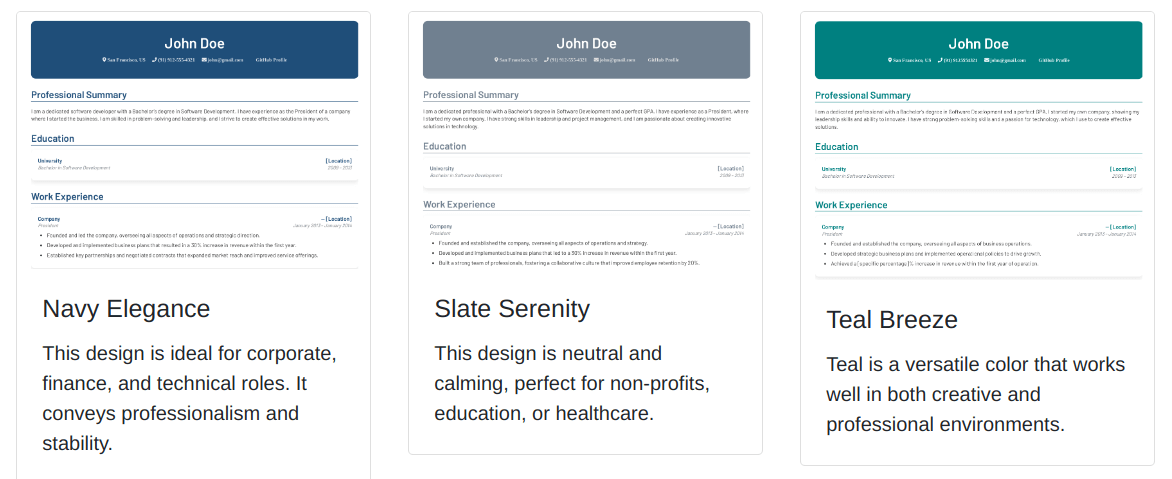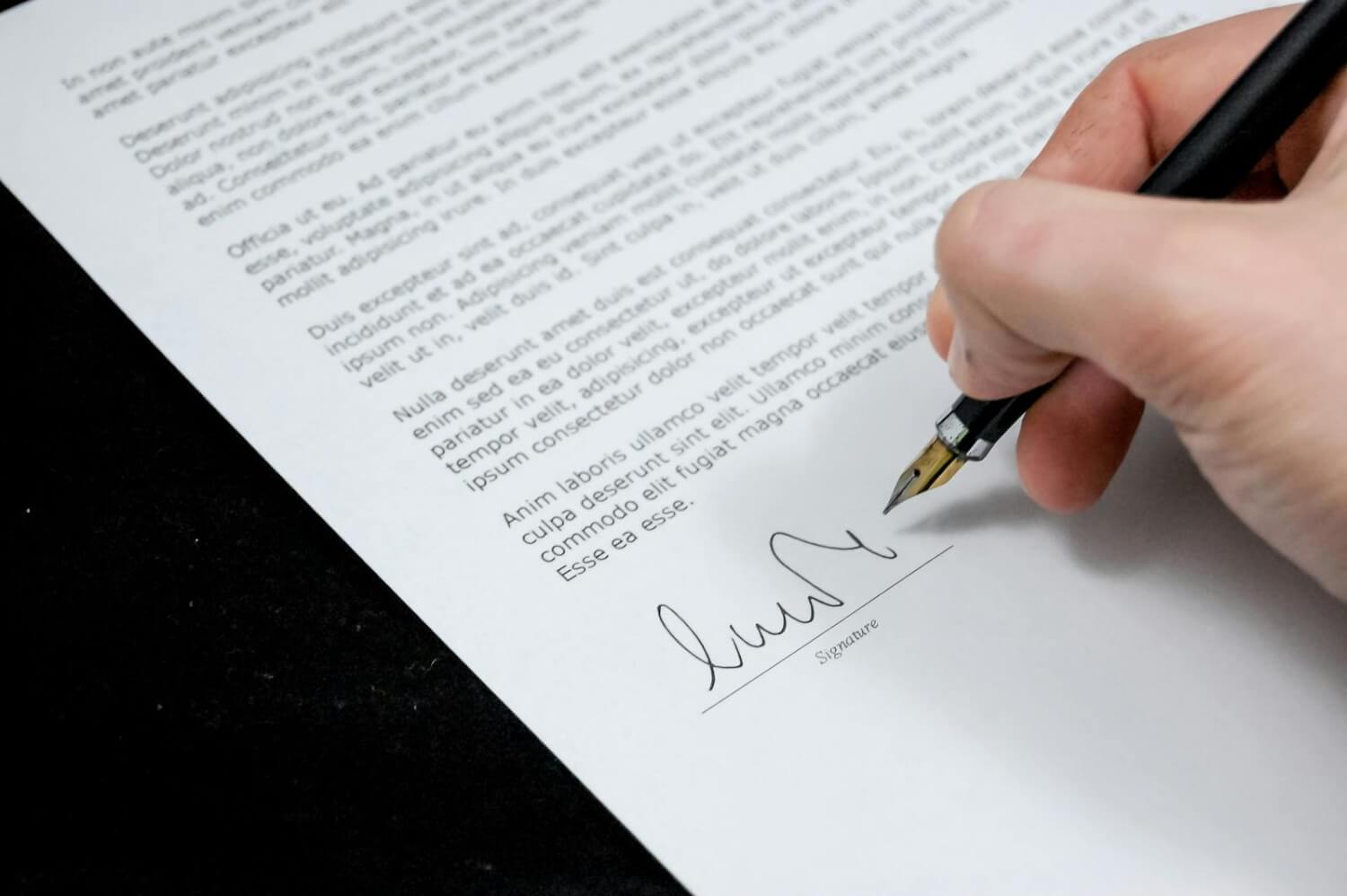Do you want to give Two Weeks of Notice before moving to your new job?
It’s a mix of excitement for new beginnings and the weight of responsibility to those you’re leaving behind. Submitting a two-week notice isn’t just a formality; it’s a pivotal step that can shape our professional journey and relationships.
Imagine walking into your boss’s office, heart racing, ready to share your decision. That moment can set the tone for your future references and connections. Crafting a thoughtful two weeks notice letter not only reflects your professionalism but also allows you to exit gracefully, leaving behind a legacy of respect and goodwill.
In this guide, we’ll learn more about how to give notice, the importance of giving a two-week notice, and how to do it right.
What is a Two Weeks Notice?
A two weeks notice is a formal notification provided by an employee to their employer, indicating their intent to leave the job in a two-week timeframe. This period typically equals ten working days, not counting weekends and it is crucial for both employees and employers as it lays the groundwork for a respectful parting of ways.
The primary purpose of a two-week notice is to grant the employer enough time to seek a replacement or redistribute the employee’s responsibilities. A smooth transition minimizes disruptions within the workplace, ensuring that team dynamics remain stable. Giving notice shows professionalism and respect from the employee’s side, preserving a positive relationship even after parting ways.
The notice period usually begins on the day you submit your resignation letter or verbally communicate your intent to leave, followed by a written confirmation. It’s essential to specify the last working day in the resignation letter. This clarity will help your employer to plan their next steps, like scheduling interviews for potential replacements or adjusting workflow accordingly.

According to a 2020 LinkedIn survey, 85% of employers appreciate receiving formal notice, highlighting its importance in professional contexts. This act reflects an individual’s character and work ethic, traits that employers value highly when considering recommendations for future job opportunities.
In essence, a two-week notice stands as a crucial element of professional etiquette within the workplace. Whether moving on to new opportunities or seeking a change, this intentional communication serves as a bridge to future career paths while enabling organizations to maintain their momentum. By offering this courtesy, employees affirm their commitment to professionalism, laying the foundation for favorable references and potential networking in the future.
Two weeks notice letter vs. resignation letter
A two weeks notice letter and a resignation letter serve similar purposes but contain distinct features. Understanding these differences can help you to clarify your communication with your employer.
Two Weeks Notice Letter
A two weeks notice letter functions as formal notification to an employer about your intention to leave a job, providing a two-week timeframe for transition. Key elements include:
- Contact Information: Your details ensure the employer can reach you for follow-up.
- Date: This marks the start of the notice period.
- Clear Resignation Statement: A direct phrase such as “I am resigning” avoids ambiguity.
- Last Working Day: Specifying this date confirms our final day of employment.
- Offer of Assistance: This gesture demonstrates professionalism during the transition.
- Expression of Gratitude: Acknowledging our employer fosters goodwill.
This letter emphasizes respect and aids in preserving relationships, which may benefit you in the future.
Resignation Letter
A resignation letter covers a broader range of formal notifications about leaving a job. While it often includes a two weeks notice, it can also cater to various circumstances, including immediate resignations or extensions beyond two weeks. Resignation letters usually include:
- Overall Intent: It announces your decision to resign regardless of notice length.
- Reasons for Resignation: While optional, stating your motivations shows transparency.
- Effective Date: This aligns with the notice period and ensures clarity.
Most often, we combine both letters into one document, efficiently communicating all necessary information to employers. This formality will show your professionalism and adherence to company policy, ensuring that your exit aligns with the organizational norms.
Importance of Two Weeks of Notice
Providing two weeks of notice is very important for both the employee and the employer. For the employee, it ensures that you can hand over properly and also leave on a good term. For the employer, it enables them to make proper adjustments or hire a replacement for your position.
Professionalism and Respect
Giving a two weeks notice displays professionalism and respect towards your employer, it gives the employer the necessary time to prepare for your departure. Your ability to communicate clearly during this period can influence how you’re perceived in future endeavors, who knows, you might want to work with them again in the future.
Career Impact and Future References
The implications of giving two weeks of notice often extend beyond immediate workplace dynamics, this act significantly impacts your career trajectories. A respectful resignation gives you a good reputation and increases the likelihood of receiving strong references for future roles or endeavors.
How to Give Two Weeks of Notice
Giving two weeks of notice requires preparation and tact. This process not only signifies your decision to move on but also reflects your professionalism. A well-executed notice creates a respectful transition for ourselves and our employer.
Preparation Steps
Understanding the purpose of our notice is vital. Two weeks of notice serves as a professional courtesy that allows our employer time to find a replacement and manage ongoing tasks, this acknowledgment of our role in the company sets the tone for our transition.
Reviewing company policies is also crucial before resigning, most companies have employee handbooks that usually outline specific procedures about notice periods. Some employers may offer incentives for longer notice or impose penalties for shorter ones, you should verify these details before writing your notice letter.
Preparing a transition plan shows our professionalism, we must identify essential tasks and projects to complete or hand over during the notice period. This includes notifying vendors or clients, organizing files, and ensuring continuity of our work. A well-structured transition plan demonstrates our commitment to supporting our team even as we prepare to leave.
Delivering the Notice
Delivering our two weeks notice carries significance. We typically communicate verbally with our manager first, as this personal approach shows respect. Following the conversation, we submit a formal resignation letter to document our intent.
A resignation letter should include key elements, it must contain our contact information, the date, the recipient’s information, a clear statement of resignation, our last working day, an offer to assist during the transition, and a note of gratitude towards our employer.
Key Components of a Two Weeks of Notice Letter

Crafting a two-week notice letter requires attention to several key components and we will look at these elements and their impact on the resignation process.
Addressing the Letter
Start your letter with your contact information at the top. Include your full name, mailing address, phone number, and email address. Following this, include the date of the letter.
Next, address the recipient appropriately using their full name, title, the company’s name, and company address. Proper addressing displays respect and helps ensure the letter reaches the correct individual.
Stating Your Resignation
Begin the body of the letter with a clear resignation statement. For example: “I am writing to formally resign from my position as [Job Title] at [Company Name].” Avoid ambiguous phrases like “I’m thinking about leaving” to eliminate confusion about your intentions. A precise statement eliminates any doubt about your decision and sets the tone for a professional exit.
Last Working Day
Specify your final working day in the letter. For instance, include a line such as, “My last working day will be [specific date].” This clarity aids your employer in planning for your departure and outlining the necessary steps for a smooth transition. It should also align with the two-week notice period requirement of the organization, indicating your understanding of the professional process.
Offer of Assistance
Extend an offer to assist during the transition period. You might say, “I am willing to help train my replacement or assist in wrapping up projects.” This gesture underscores your commitment to maintaining productivity until your final day. It leaves a positive impression, showing your dedication to the team and organization, and it opens the door to future professional relationships.
Expression of Gratitude
Conclude your letter with a thoughtful expression of gratitude. For example: “I am grateful for the opportunities and experiences gained while working at [Company Name].” Highlighting the positive aspects of your time at the company preserves goodwill and fosters a favorable environment for future references. This acknowledgment shows not just respect for your employer but also an appreciation for the journey you shared.
Common Mistakes to Avoid
Writing a two-week notice letter comes with its own share of challenges and it is easy to make mistakes that can have a lasting impact on your career. We will be highlighting a few pitfalls below so that you can avoid them.
Missing Contact Information
Always include complete contact information. Omitting your name, job title, and last working day complicates the communication process for your employer. For example, if you forget to mention your email or contact number, it may lead to confusion about who submitted the notice or how to reach you for any follow-up. This simple oversight can create problems in the resignation process, so make sure you double-check these details.
Being Vague or Indirect
Clarity is very important, you must state your intention to resign and specify the last working day clearly. Avoid using ambiguous phrases that may lead to misinterpretation. For example, saying, “I’m thinking of moving on” can create uncertainty, whereas stating, “I resign effective [last working day]” provides precise information. Transparency helps your employer plan for your departure.
Including Negative Comments
We all know that there will be workplace issues and you may be tempted to vent them in your last days, please don’t. It’s crucial to refrain from including negative remarks about the company, colleagues, or management; such comments can sour professional relationships and impact future references. Instead, keep the tone positive and respectful, to preserve your reputation within the organization.
As tempting as it may be to vent frustrations, taking the high road pays off.
Not Following Company Policy
Many companies have specific policies about resignation and notice periods, so it is important that you check the employee agreement to understand any particular requirements before you write your two-week notice letter. If you ignore these policies, it can lead to complications in the resignation process and may even jeopardize your final paycheck.
By adhering to the company policies, you show respect for the company and its protocols.
Forgetting to Express Gratitude
Expressing gratitude leaves a lasting impression on your employers, a simple “thank you” can go a long way in showing appreciation for the opportunities received. You can also highlight positive experiences or events during your stay at the company, for instance, mentioning how much you value your manager’s support or the teamwork within your department can create goodwill that supports long-term professional relationships.
Over-Explaining Reasons for Leaving
You should avoid providing excessive details about why you’re leaving, while being honest is important, over-sharing personal grievances can create unintended outcomes. A straightforward, concise statement, such as “I’m pursuing new opportunities,” suffices without going into unnecessary specifics. Keep it short and straight to the point.
Failing to Offer Assistance
Offering your help during the transition period shows professionalism and a commitment to the team. You should offer to assist with training your replacement or completing outstanding tasks. This willingness can help bridge any gaps left by your departure and show that you care about the responsibilities you hold. A simple mention of your availability for questions can go a long way to make the transition process smooth.
Submitting Without Proofreading
Errors in your resignation letter can undermine the professionalism you wish to convey, so take a moment to proofread it to ensure clarity and correctness in your message. Check for spelling mistakes or grammatical errors as they can distract from your intent and create an impression of carelessness. To avoid this, you can read your letter aloud or ask a friend to review it for you.
Tips for Writing an Effective Two Weeks of Notice
Writing a two weeks of notice letter demands careful consideration and professional finesse. We can enhance the effectiveness of our notice by focusing on specific aspects that ensure clarity and respect. Below are some tips to help you write a good two weeks of notice letter.
Maintain a Positive Tone
Maintaining a positive tone is essential, we should express gratitude for the opportunities we’ve had at the company, highlighting any positive experiences. Phrases like, “I appreciate the support and mentorship during my time here,” foster goodwill and leave a lasting impression. This approach not only helps us close one chapter gracefully but also keeps doors open for future networking and opportunities.
Keep It Concise and Clear
Clarity and brevity are key, our notice should directly state our intention to resign, specify the last working day, and outline any critical tasks for handover. For example, starting with, “I am resigning from my position as [Job Title], with my last working day being [Date],” eliminates confusion and sets a clear framework for our departure. Including transitional details shows professionalism and commitment to ensuring a smooth process for both parties.
Proofread Before Submission
Proofreading our letter is crucial, spelling and grammatical errors can should be avoided. Take a moment to read through the notice to ensure that it conveys your message accurately and reflects your attention to detail. A well-crafted letter boosts your reputation, showcasing reliability even as you transition away from the role.
You can also draft multiple versions or ask a trusted colleague for feedback to ensure clarity and professionalism.
Can you give two weeks notice verbally?
Yes, giving two weeks notice verbally is legally acceptable in the United States, but, this approach poses several challenges that may undermine the professionalism of your resignation. Verbal communication lacks the formal documentation that a written notice provides, which can lead to misunderstandings about your departure date and responsibilities.
Verbal notices can easily be forgotten or misinterpreted, creating ambiguity about our last working day. In contrast, a written notice serves as a formal record, solidifying your intent and ensuring clarity. According to various HR sources, 85% of employers prefer a written notice due to its ability to prevent miscommunication and provide a clear timeline for transition.
Best practices recommend initiating the resignation process with a face-to-face conversation, this approach respects the employer while facilitating an open dialogue about your decision to leave. Following the discussion, you should submit a written resignation letter or email to document the conversation and specify the last day of work.

Steps for Effective Resignation Communication
- Prepare for the Conversation: Anticipate questions and be ready to discuss your reasons for leaving. This preparation demonstrates professionalism and respect.
- Schedule a Meeting: Request a private meeting with your supervisor. A personal conversation creates an environment of mutual respect and allows for a thoughtful exchange.
- State Your Intent Clearly: During the meeting, clearly communicate your decision to resign and mention your two weeks’ notice. Providing the exact date of your last day helps clarify expectations.
- Follow Up with a Written Notice: After the meeting, send a polished resignation letter or email. Confirm your last working day, express gratitude, and offer assistance during the transition.
Examples of Successful Resignations
Consider an example where an employee, Sara, chose to resign verbally. After informing her manager, she realized weeks later that her manager had documented her last working day incorrectly. This oversight caused scheduling conflicts and frustration.
In contrast, another employee, Mike, followed a structured resignation process. He engaged in a meaningful conversation with his supervisor, submitted a written notice, and even assisted with training his replacement. Mike’s approach ensured a smooth transition and left a lasting positive impression.
Reflection
Are we considering the long-term impact of our resignation? Will a respectful departure enhance our professional relationships and future opportunities? The conversation around giving notice isn’t just about leaving a job; it’s about how we want to be remembered in the workplace.
Remember, the act of providing two weeks’ notice is more than fulfilling a requirement; it’s a chance to honor past work relationships. By taking the time to communicate our intent formally, we underline our commitment to professionalism, ensuring we leave on good Terms.
Two-week notice letter template
A well-crafted two-week notice letter maintains professionalism and fosters positive relationships during the resignation process. Below are templates for both formal and more casual notices, each serving distinct purposes based on the work environment and personal preferences.
Template For A Formal Notice
[Your Name]
[Your Address]
[City, State, Zip Code]
[Email Address]
[Phone Number]
[Date]
[Manager’s Name]
[Company’s Name]
[Company’s Address]
[City, State, Zip Code]
Dear [Manager’s Name],
I am writing to formally resign from my position as [Your Job Title] effective [Last Working Day, e.g., April 15, 2023]. This notice allows two weeks for the transition process.
I sincerely appreciate the opportunities I’ve had at [Company’s Name] and the support provided by the team. I’ve learned valuable skills and gained experiences that will benefit my career.
I am committed to ensuring a smooth transition and will gladly assist in training my replacement or wrapping up my current projects.
Thank you once again for everything. Please feel free to reach out for any further communication.
Best regards,
[Your Name]
Template For A More Casual Notice
Subject: Resignation Notice – [Your Name]
Hi [Manager’s Name],
I hope you’re doing well. I wanted to let you know that I’ve decided to resign from my role as [Your Job Title], with my last working day being [Last Working Day, e.g., April 15, 2023].
Working at [Company’s Name] has been a great experience, and I’m thankful for all the opportunities I’ve had. I appreciate your support and guidance throughout my time here.
I’d be happy to help make the transition easy. Let me know how I can assist during this time.
Thanks again, and I look forward to staying in touch!
Best,
[Your Name]
These templates serve as guides to ensure clarity and professionalism in communication during the resignation process. They are tailored to fit formal and casual workplace environments, and they show the importance of maintaining respect and good relationships.
Two-week notice email template
Crafting an effective two-week notice email is essential to communicate your intent clearly and professionally. Below, we present a straightforward template that includes the necessary elements. This structure ensures clarity while preserving professionalism.
Subject: Notice of Resignation
[Your Name]
[Your Address]
[City, State, Zip Code]
[Your Phone Number]
[Your Email]
[Date]
[Recipient’s Name]
[Company’s Name]
[Company’s Address]
[City, State, Zip Code]
Dear [Recipient’s Name],
I am writing to formally notify you of my resignation from my position as [Your Job Title] at [Company’s Name], effective two weeks from today. My last working day will be [Last Working Day Date].
I appreciate the opportunities for professional and personal development that you have provided during my time here. I am committed to ensuring a smooth transition and am happy to assist in handing over my responsibilities during this period.
Thank you for your understanding. I look forward to staying in touch.
Sincerely,
[Your Name]
This template captures the essential components of a two-week notice email, helping maintain professionalism while conveying gratitude. You should adapt this template to your specific needs and also add a personal touch to create a lasting positive impact on your employer.
Key Takeaways
- Understand the Purpose: A two weeks notice is a formal notification to your employer about your intention to leave the job, allowing for a smooth transition and minimizing workplace disruptions.
- Professionalism Matters: Submitting a two weeks notice reflects your professionalism and respect towards your employer, which is crucial for maintaining a positive relationship and securing future references.
- Key Components of a Notice Letter: Include your contact information, a clear resignation statement, last working day, offer of assistance, and an expression of gratitude in your notice letter to ensure a respectful exit.
- Avoid Common Mistakes: Steer clear of vague language, negative comments, and omissions in your notice letter, as these can harm your professional reputation and future opportunities.
- Delivery Method: Initiate the resignation process with a face-to-face conversation to demonstrate respect, followed by written notice for formal documentation and clarity on your last working day.
- Career Impact: Properly giving your two weeks notice can enhance your career path by fostering goodwill and establishing valuable networking connections for future job opportunities.
Conclusion
Navigating the process of giving two weeks’ notice is a significant step in our professional journey. It’s not just about leaving a job; it’s about how we leave it. By approaching this transition thoughtfully and respectfully, we set the stage for future opportunities and maintain valuable connections.
Creating a well-structured notice letter and communicating our intentions clearly can make all the difference. This act reflects our professionalism and character, showcasing the respect we hold for our current employer and colleagues. As we move forward in our careers, let’s remember that the way we exit can impact our future in ways we might not immediately see. Embracing this process with care ensures we leave on good terms, paving the way for a successful next chapter.
Frequently Asked Questions
What is a two weeks notice?
A two weeks notice is a formal notification from an employee to their employer, indicating the intent to leave the job within a two-week timeframe. This period allows employers to manage transitions effectively by finding replacements and redistributing tasks while showcasing professionalism.
Why is giving a two-week notice important?
Providing a two weeks notice is essential as it helps maintain respectful relationships between employers and employees. It reflects professionalism, acknowledges the effort invested in the role, and positively influences future references and networking opportunities.
What should be included in a two weeks notice letter?
A two weeks notice letter should include your contact information, a clear resignation statement, your last working day, an offer to assist in the transition, and a note of gratitude towards the employer to ensure a respectful and professional departure.
Can I provide my two weeks notice verbally?
Yes, you can give your two weeks’ notice verbally, but it’s recommended to follow up with a written notice. This ensures clarity regarding your last working day and responsibilities while helping to document the conversation for future reference.
What common mistakes should I avoid in my notice letter?
Avoid including negative comments, and excessive details on why you’re leaving, and ensure your tone remains positive. Remember to proofread your letter, include complete contact information, and clarify your last working day to maintain professionalism.


